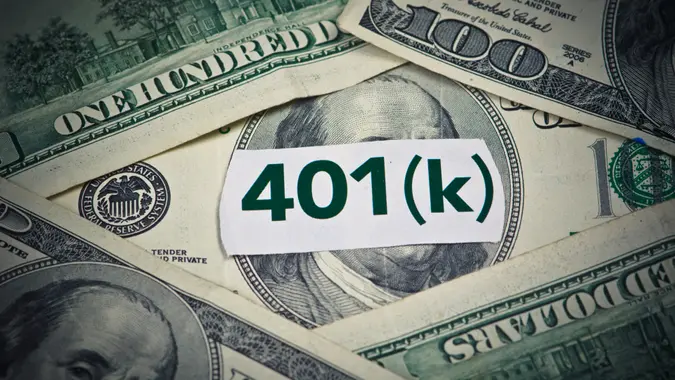How Much Should the Average Middle-Class Boomer Have in Savings?

Commitment to Our Readers
GOBankingRates' editorial team is committed to bringing you unbiased reviews and information. We use data-driven methodologies to evaluate financial products and services - our reviews and ratings are not influenced by advertisers. You can read more about our editorial guidelines and our products and services review methodology.

20 Years
Helping You Live Richer

Reviewed
by Experts

Trusted by
Millions of Readers
With economic uncertainty around every market dip and Social Security benefits being tenuous at best, padding your retirement accounts while battling the rising cost of living is getting harder and harder. Baby boomers in America are already at or near retirement. So, how much should the average middle-class boomer have in savings to comfortably weather their golden years?
While Andrew Latham, certified financial planner (CFP) and managing editor at SuperMoney, stated there’s no one-size-fits-all answer given factors like debt, present funds, possible bequests, medical expenditures and expected inheritances, there are a couple of popular rules of thumb that can help guide retirement savings goals.
In the United States, the middle class is generally defined as households earning between two-thirds and double the national median income. Here are two rules that everyone, especially those with middle-class household incomes, should consider when smoothing out their retirement income levels.
Rule #1: Save 10-12 Times Your Annual Income
Many analysts, along with the Pew Research Center, define middle-class as someone making a median household income between $56,600 and $169,800 annually. Here are some estimations that financial experts recommend for the baby boomer generation retiring in the United States:
- $56,600 annual income x (10 to 12) = $566,000 to $679,200 in savings
- $169,800 annual income x (10 to 12) = $1.7 million to just over $2 million in savings
So, baby boomers retiring with less than about $566,000 in their savings account could have a less than sunny outlook in the long term.
Rule #2: Rule of 25
Latham explained that this rule creates a much more personalized target. The idea is to save 25 times your estimated annual retirement expenses — which assumes a 4% annual withdrawal. So, whether you retire at age 65, 67 or 70, here are some savings goals to consider.
First, calculate your annual retirement expenses, which are estimated to be about 75% of your pre-retirement living expenses, “as you’ll likely spend less on work-related costs and saving for retirement.” (For this model, an annual income to signify pre-retirement living expenses was used.) Next, subtract any expected annual fixed income, like Social Security or pensions, to determine what your savings need to cover. Finally, multiply that number by 25.
- .75 x $56,600 annual income = $42,450 annual retirement expenses
- $42,450 – $20,000 expected Social Security = $22,450 needed in annual savings
- $22,450 x 25 = $561,250 in overall savings
Or…
- .75 x $169,800 annual income = $127,350 annual retirement expenses
- $127,350 – $30,000 expected Social Security = $97,350 needed in annual savings
- $97,350 x 25 = $2.43 million in overall median retirement savings
The bottom line, says Latham, is that the goal is not to meet some arbitrary number but to have a realistic plan that fits every individual’s needs and goals.
Caitlyn Moorhead contributed to the reporting for this article.
 Written by
Written by  Edited by
Edited by 

























